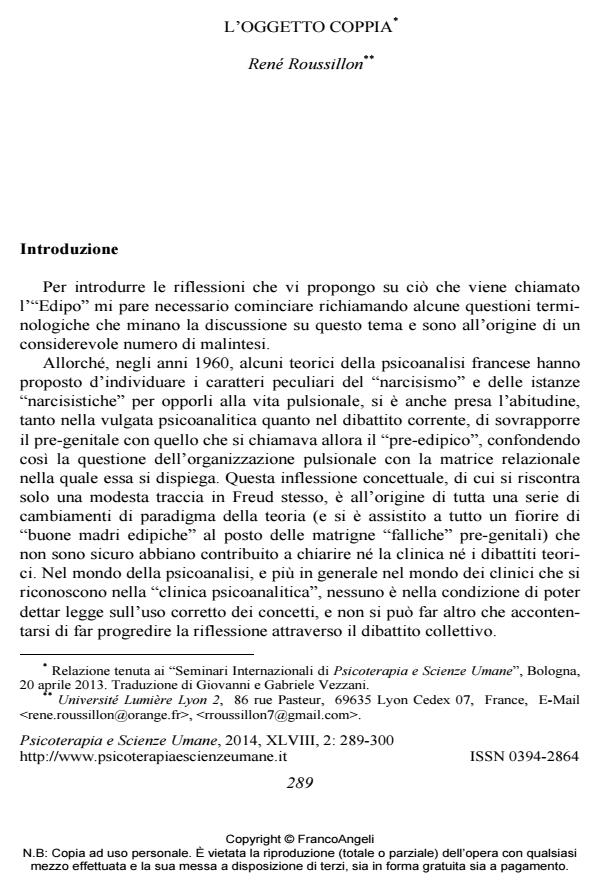L’oggetto coppia
Titolo Rivista PSICOTERAPIA E SCIENZE UMANE
Autori/Curatori René Roussillon
Anno di pubblicazione 2014 Fascicolo 2014/2
Lingua Italiano Numero pagine 12 P. 289-300 Dimensione file 50 KB
DOI 10.3280/PU2014-002005
Il DOI è il codice a barre della proprietà intellettuale: per saperne di più
clicca qui
Qui sotto puoi vedere in anteprima la prima pagina di questo articolo.
Se questo articolo ti interessa, lo puoi acquistare (e scaricare in formato pdf) seguendo le facili indicazioni per acquistare il download credit. Acquista Download Credits per scaricare questo Articolo in formato PDF

FrancoAngeli è membro della Publishers International Linking Association, Inc (PILA)associazione indipendente e non profit per facilitare (attraverso i servizi tecnologici implementati da CrossRef.org) l’accesso degli studiosi ai contenuti digitali nelle pubblicazioni professionali e scientifiche
La questione della organizzazione edipica viene affrontata a partire dalla progressiva strutturazione di un oggetto psichico particolare, definito "oggetto coppia". Questo oggetto trova la sua prima forma nella realizzazione precoce delle prime rappresentazioni di essere in relazione con la madre, di un primo "stile" di relazione. Questa prima rappresentazione diventa poi più complessa nel momento in cui il padre viene designato come oggetto di relazione e di desiderio da parte della madre, e il bambino passa progressivamente dalla organizzazione dei suoi "schemi di essere con l’oggetto" a "schemi di essere con un oggetto che è con un altro oggetto". Il bambino continuerà poi la sua costruzione dell’oggetto coppia nelle esperienze dove potrà essere "solo davanti alla sua pulsione in presenza della coppia". L’elaborazione e l’organizzazione della posizione edipica si costruirà secondo diversi tipi di organizzazione della vita pulsionale che si succederanno nel corso dello sviluppo.
Parole chiave:Edipo, coppia, "schemi di essere con", ideale narcisistico, organizzazione libidica
- Challenging Oedipus in changing families: Gender identifications and access to origins in same-sex parent families created through third-party reproduction Vittorio Lingiardi, Nicola Carone, in The International Journal of Psychoanalysis /2019 pp.229
DOI: 10.1080/00207578.2019.1589381
René Roussillon, L’oggetto coppia in "PSICOTERAPIA E SCIENZE UMANE" 2/2014, pp 289-300, DOI: 10.3280/PU2014-002005